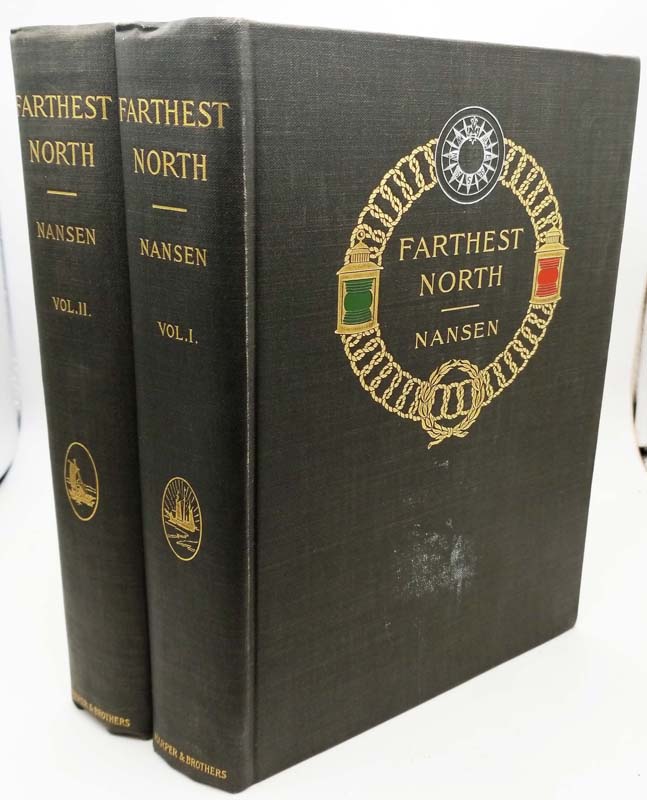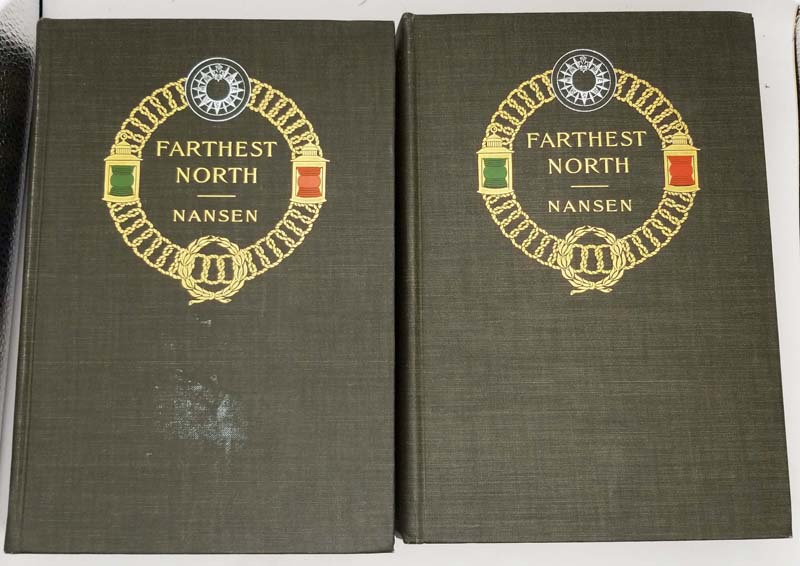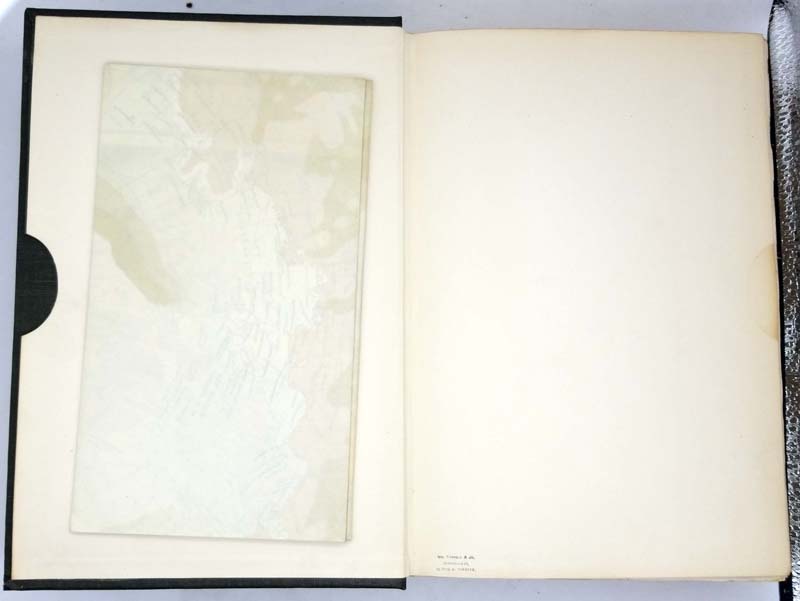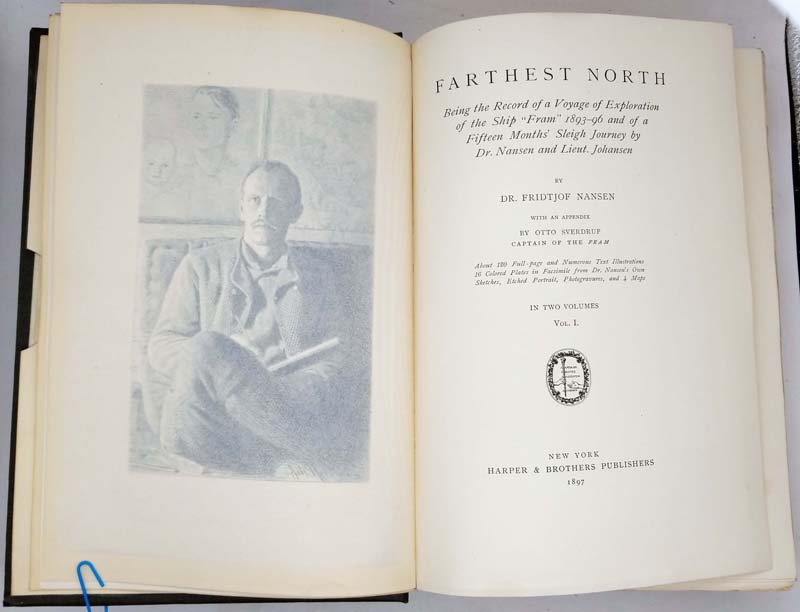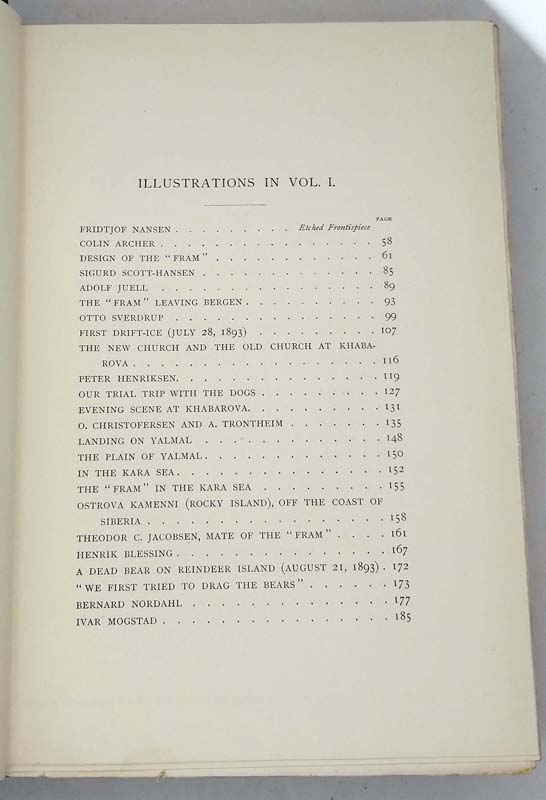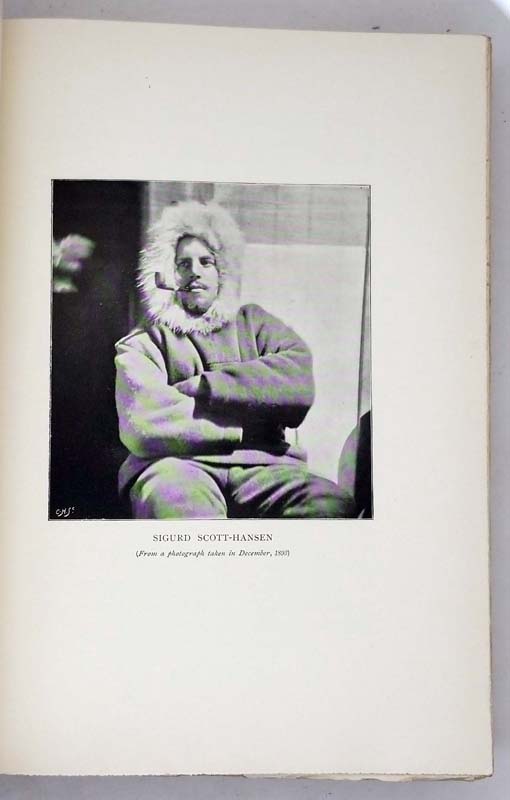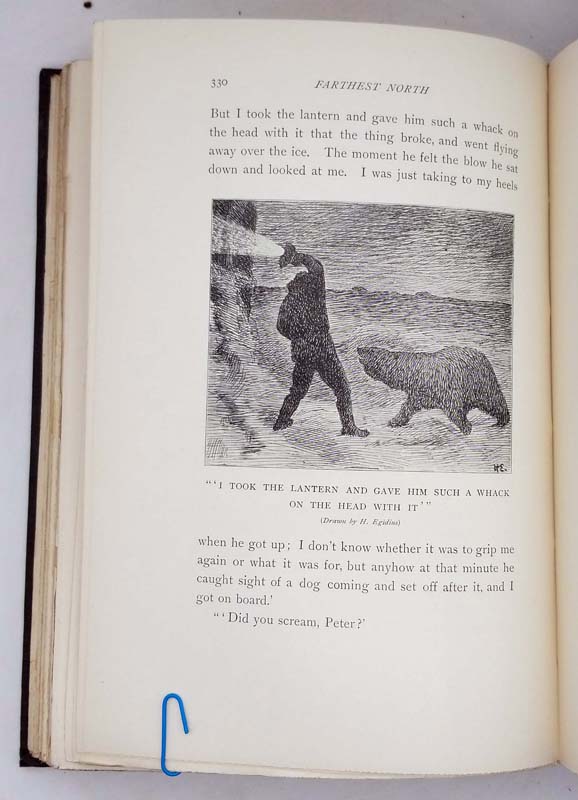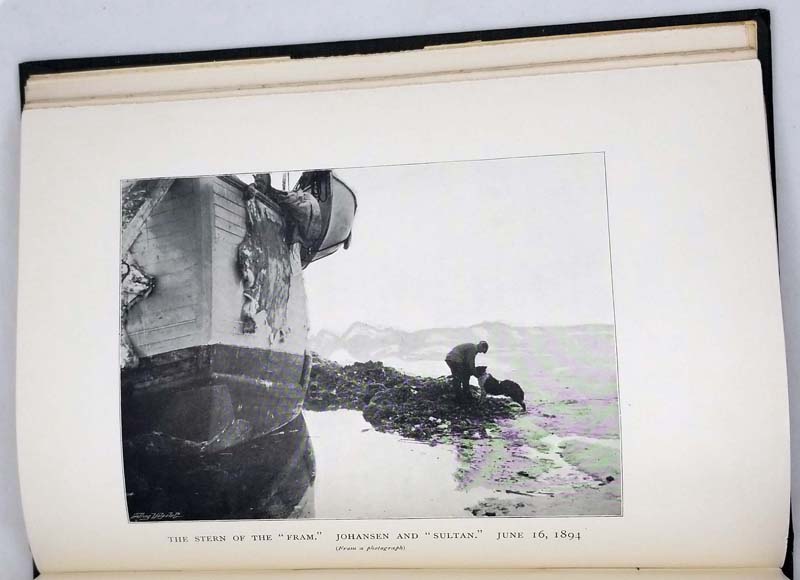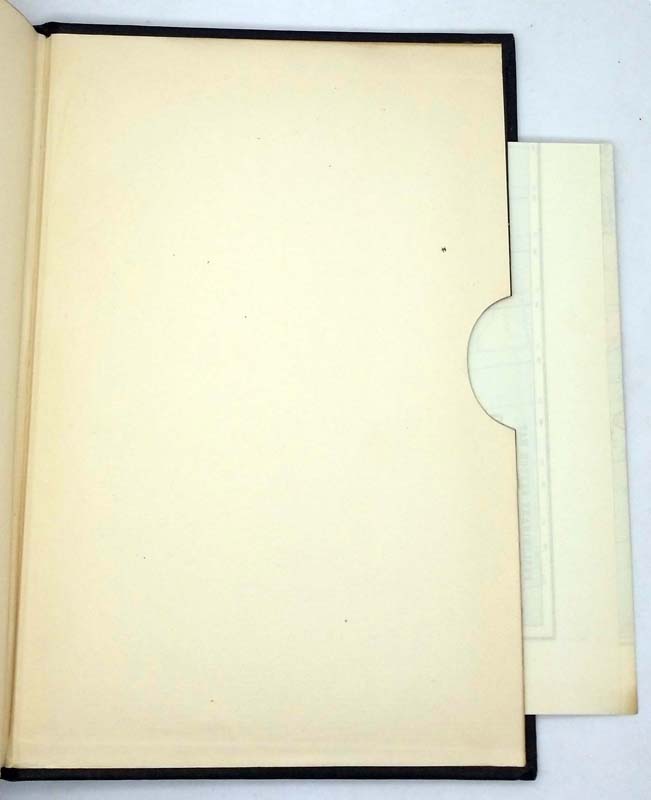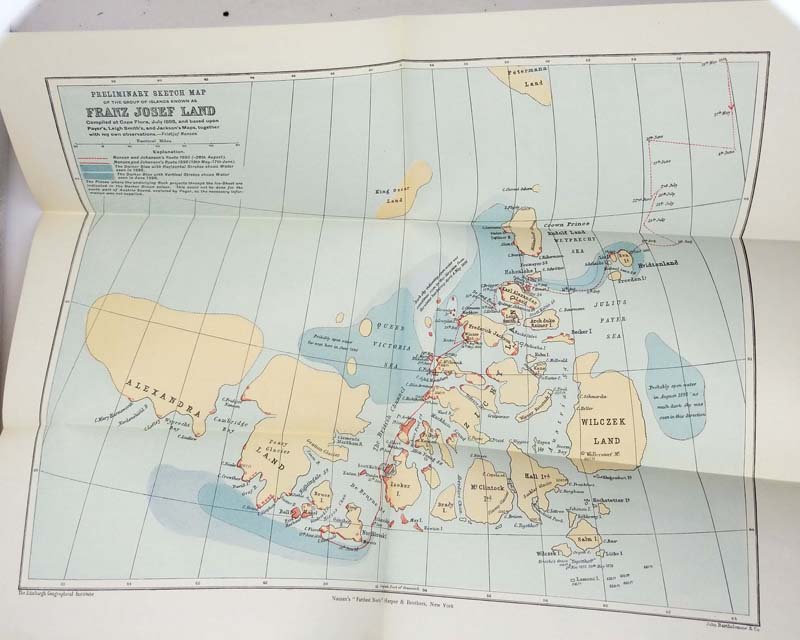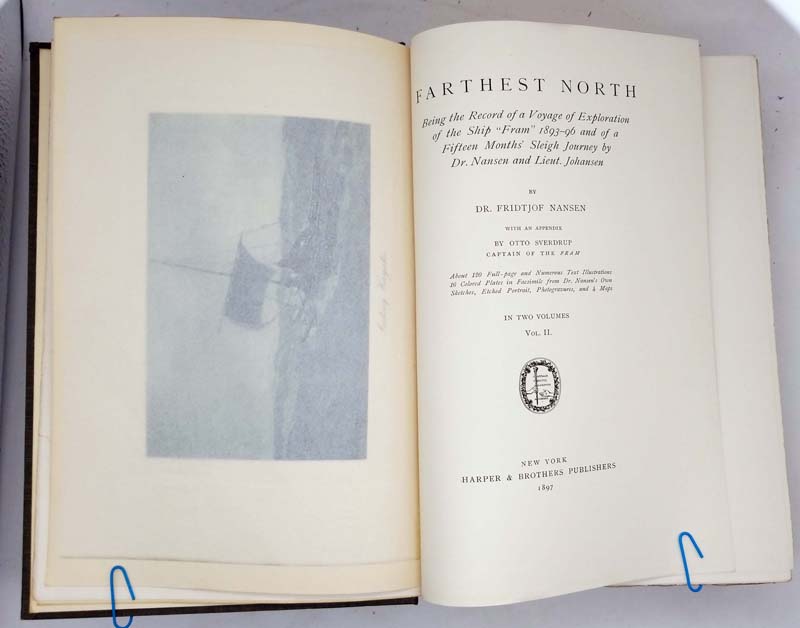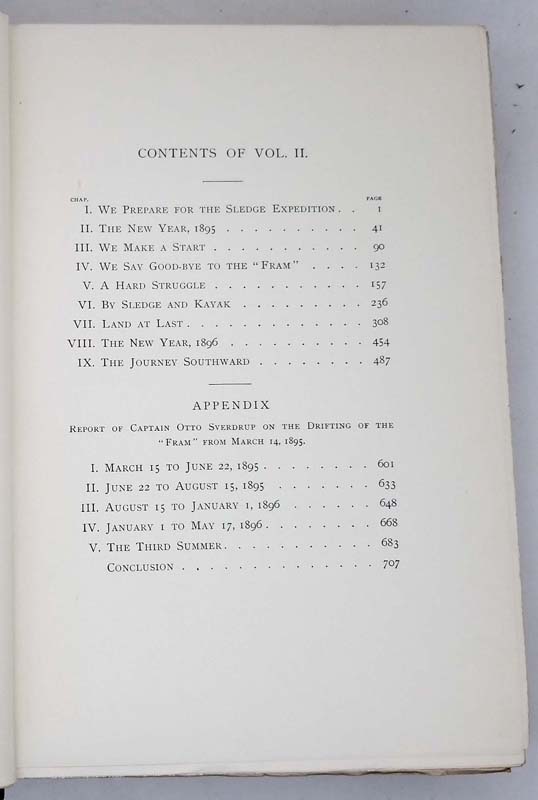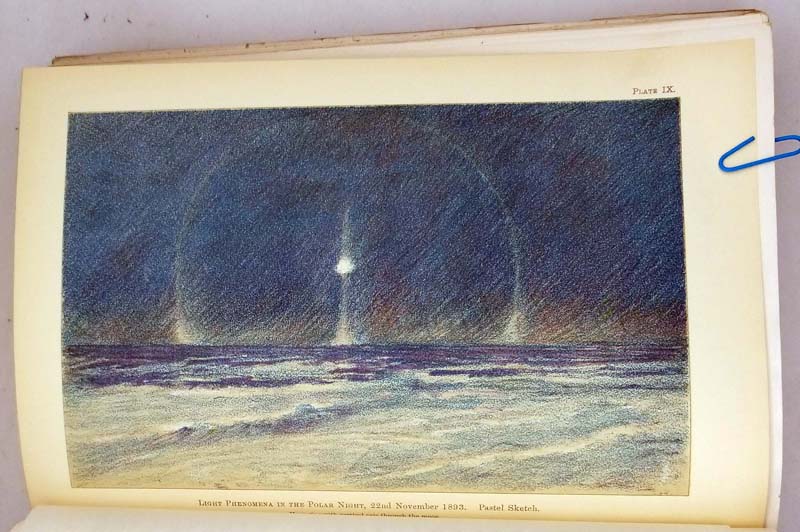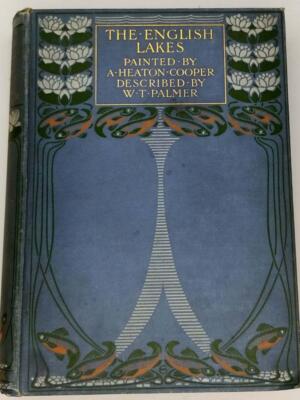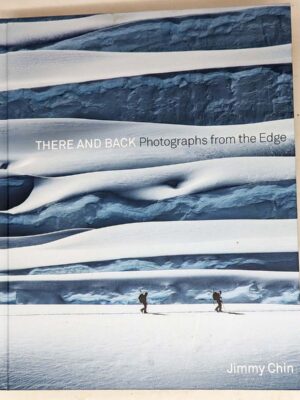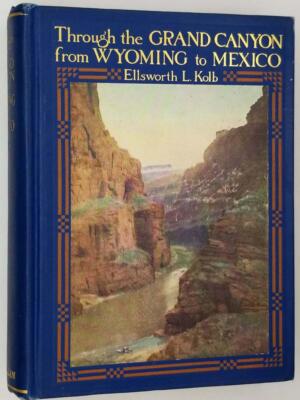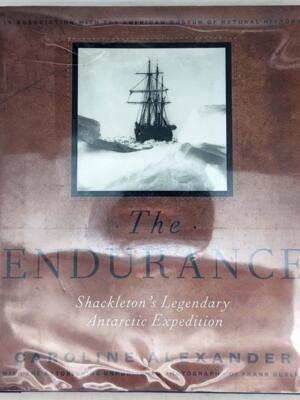“Not since the publication of Mr. Stanley’s ‘In Darkest Africa’ has any work of travel been received with the enthusiastic welcome accorded to Dr. Nansen’s ‘Farthest North.’” –The Publisher, 1897
Written for the popular reading public, “Farthest North” delighted thousands by its vigor of imagination, its masterful handling of material, its distinguished style. Fiction has woven no story to compare in fascinating interest with this tale of actual struggle with the unrelenting forces of inhospitable nature. Nansen captivated readers by his brilliant exploits, and “lifted the veil which concealed the secrets of the North Polar regions.”
Nansen’s Fram expedition was an 1893–1896 attempt by the Norwegian explorer Fridtjof Nansen (1861-1930) to reach the geographical North Pole by harnessing the natural east–west current of the Arctic Ocean.
In the face of much discouragement from other polar explorers, Nansen took his ship Fram to the New Siberian Islands in the eastern Arctic Ocean, froze her into the pack ice, and waited for the drift to carry her towards the pole. Impatient with the slow speed and erratic character of the drift, after 18 months Nansen and a chosen companion, Hjalmar Johansen, left the ship with a team of dogs and sledges and made for the pole.
In 1897, Nansen published a narrative of the expedition, “Farthest North,” which was received with jubilation at the time of its publication:
“This unrivaled book of Arctic travel is an account of an expedition totally unlike all others before it.” Hugh Robert Mill, Geographer
“The heroism is magnificent…the man who defies the uncontrollable forces of Nature.” London Quarterly and Holborn Review
“A remarkable book…a brilliant record of skill, courage and perseverance amid enormous difficulties as well as of a success without a parallel. Life and adventures in the Polar seas have never been described with a more brilliant pen. Nansen is a master in the art of writing as well as in the art of exploration…keeps readers’ attention and interest always on the alert.” Scottish Review
Nansen’s plan for the expedition had found scanty favor with the geographers, whom he gibbets in the early part of his book with evident enjoyment. Greely had called the expedition “Dr. Nansen’s illogical scheme of self-destruction.”
The details of building Fram, undoubtedly the most ingenious boat ever launched at that time, will be read with keen interest. She was to be a fully-rigged vessel of 170 tons, with 6-knot engines , built on such lines and of such materials as should withstand or evade the tremendous ice-pressure to which she would be subjected. From the designing and building of the ship to the minutest portion of the stores she carried, no pains had been spared to deserve success.
Both while on the Fram and during his sledge journey with Johansen, Dr. Nansen kept a diary, and at times he has drawn largely on its pages in compiling his story. Nansen writes: “I laugh at the scurvy; I laugh at the ice; we are living, as it were, in an impregnable castle. I laugh at the cold; it is nothing. But I do not laugh at the winds; they are everything; they bend to no man’s will.”
Outside of the protection of the Fram, the warlike appearance of walruses or polar bears wasn’t welcome, especially when the walruses ripped open the kayaks or the bears killed the dogs–or attacked the men. As Nansen relates: “I drew my sledge to the end of the ice, when I heard a scuffle behind me, and I turned round and saw an enormous bear throwing itself on him, and Johansen on his back….”
A hundred years after the expedition the British explorer Wally Herbert called the Fram voyage “one of the most inspiring examples of courageous intelligence in the history of exploration.” “Far North” was originally translated to English by Hubert Majendie Gepp (1857-1892)
